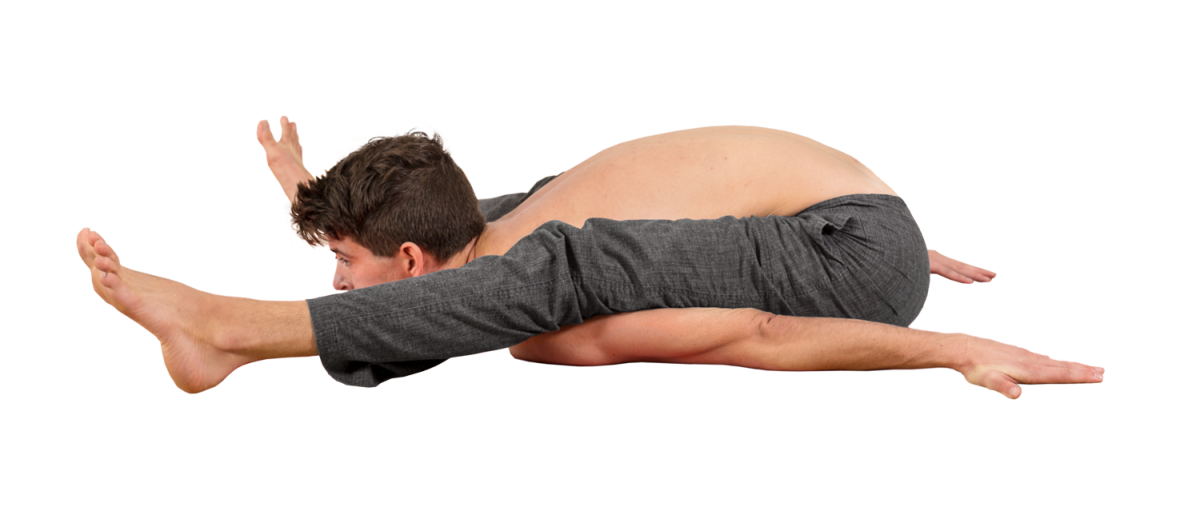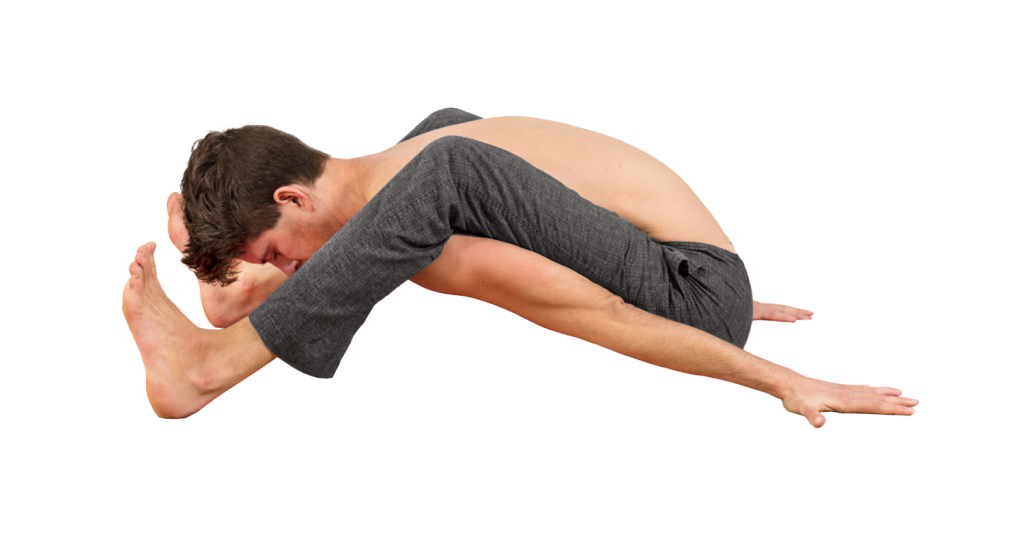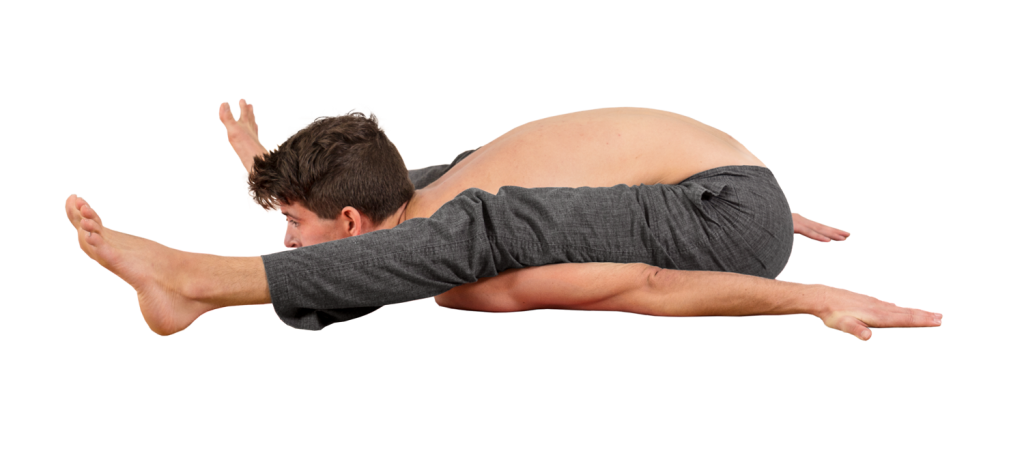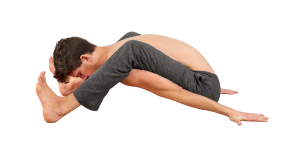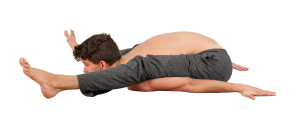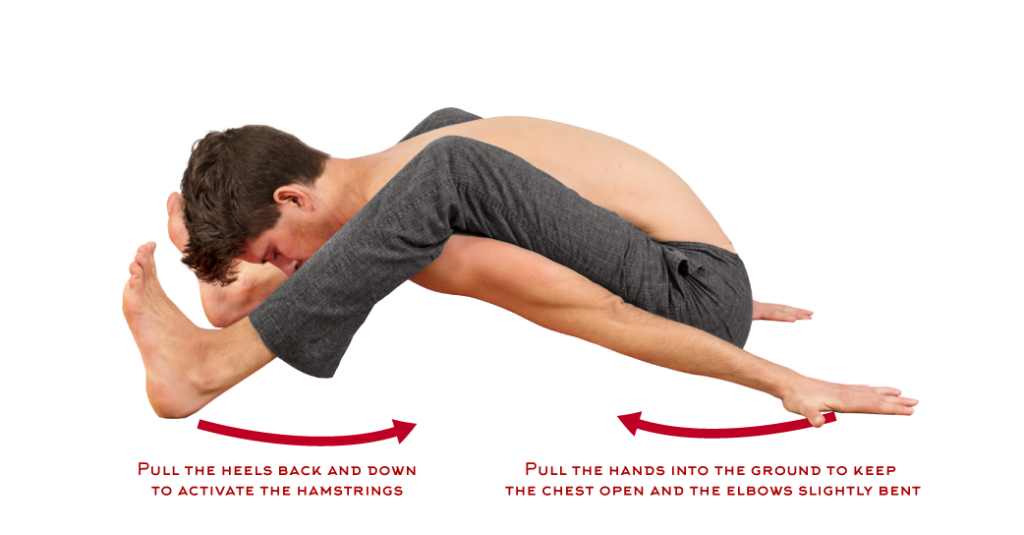Kurmasana
- Kurma: Turtle (Typically considered to be an incarnation of Vishnu, supporting the world upon his back)
- Asana: Pose
Kurmasana is the twentieth pose of the primary series, and the fifteenth seated pose. This is the second pose of what is often called the “apex” of the Primary series—five challenging asana in the middle of the sequence.
Kurmasana requires significant hamstring length, the most of any pose in the Primary series. The final action of Kurmasana—lifting the heels off the ground—demands strength of the quadriceps at their shortest length.
FOCUS ON…
This pose need not be attempted or added into the sequence until sufficient flexibility has been developed from the preceding forward fold postures. Keep in mind the lessons taught by those postures, too:
Principles of Forward Folding:
The arm position in Kurmasana distinguishes it from most forward folds. The angle of both the legs and arms should be narrow. The legs should cross well above the elbows, near or on the shoulder.
While some spinal flexion is necessary, a “collapse” is not. Length must be teased out of the front of the body, so that the belly is long and the sternum can touch the ground. The head should be placed lightly on the mat, with the chin touching down; it should not be uncomfortable. The sternum should be on the ground and bear weight. If the shoulders are bearing weight but the sternum is not touching the ground, the technique is incorrect and will lead to stress and tension of the shoulders and neck. The collarbones and upper arm should be in a gentle external rotation in order to counteract the tendency of internal rotation caused by the position of the body.
Vinyasa of the Pose
Seated Vinyasa (More conservative):
From Sat, jump through and land in Dandasana. Bend the knees, and bring the feet to floor just wider than the edges of the mat. Fold forward and tuck the arms under the legs, positioning appropriately. Exhale fully as you get into position.
Inhale, straighten the legs fully. Lift the heels. This is the state of Kurmasana; hold five breaths.
Exhale, let the heels down and bend the knees slightly.
Inhale, Untuck the arms and sit upright.
Exhale, enter Supta Kurmasana. (no vinyasa)
Floating Vinyasa (More demanding):
From Sat, jump into Tittibhasana.
Exhaling, bend the knees and arms, lowering yourself to the ground so that the heels and sitting bones touch down simultaneously. Turn the hands and reach the arms back behind you, coming into the Kurmasana position.
Inhale, straighten the legs fully. Lift the heels. This is the state of Kurmasana; hold five breaths.
Exhale, let the heels down and bend the knees slightly. Enter Supta Kurmasana.
ALTERNATIVES & SOLUTIONS
If your hamstrings have gained some flexibility, but you’re not quite able to find the deepest expression of this posture, I recommend keeping the knees a bit more deeply bent. Rather than staying static—or stuck—in the pose, stretched to your limit, come out a little bit, then rhythmically bend and straighten the knees, pulling and pressing the heels. They will probably slide somewhat, which is good. If they don’t, place them on a blanket to help get a bit of slide. Bend the elbows, pulling the hands into the floor.
After bending and straightening at least five times, hold for five breaths maintaining the same sense of engagement.
COMMON MISTAKES
Legs are often placed too widely—the angle should be approximately or close to 45 degrees, close the edges of the mat, not 90°+.
Pain in the elbows is common for beginners. It is typically due to improper placement of the legs. Pain arises when the legs cross directly over or near the elbows, causing too much pressure. The legs need to be placed farther up the arms. Often, narrowing the angle of the arms, rather than having them pointing out to the sides, can help alleviate this issue as well.
If pain does not subside, revisit other forward folding postures until sufficient flexibility is developed.

